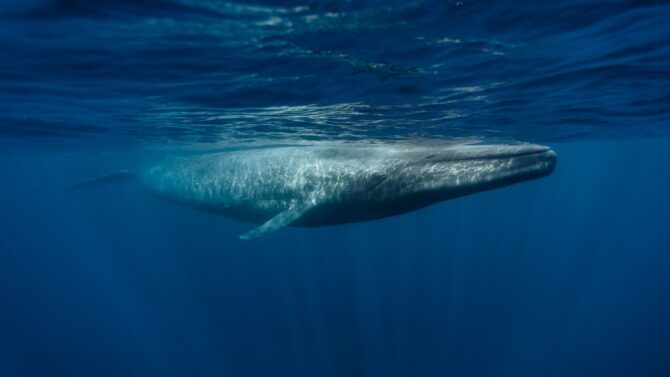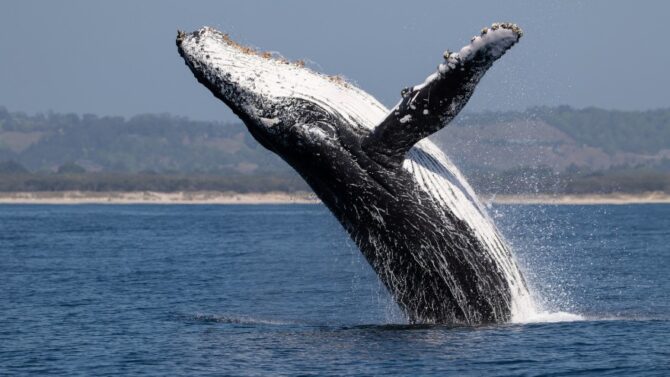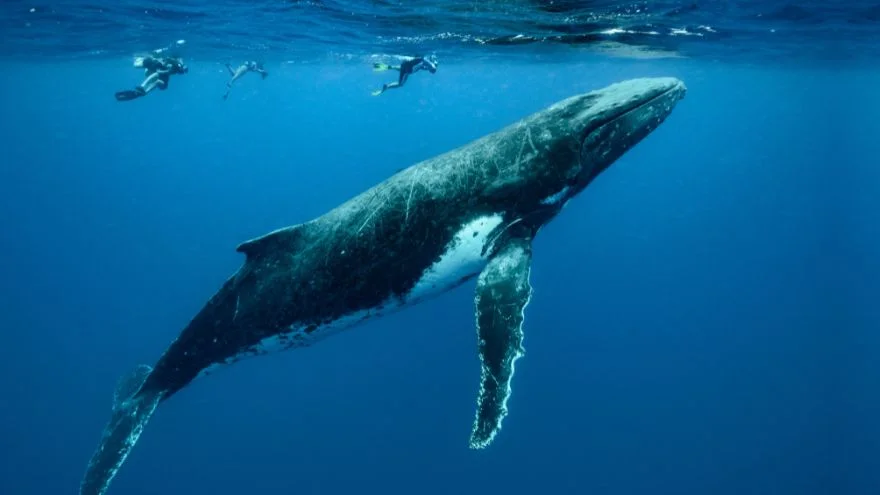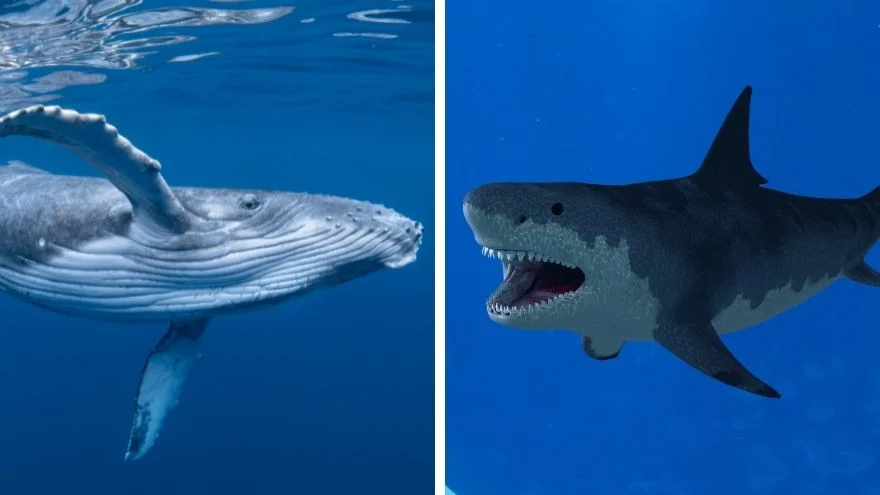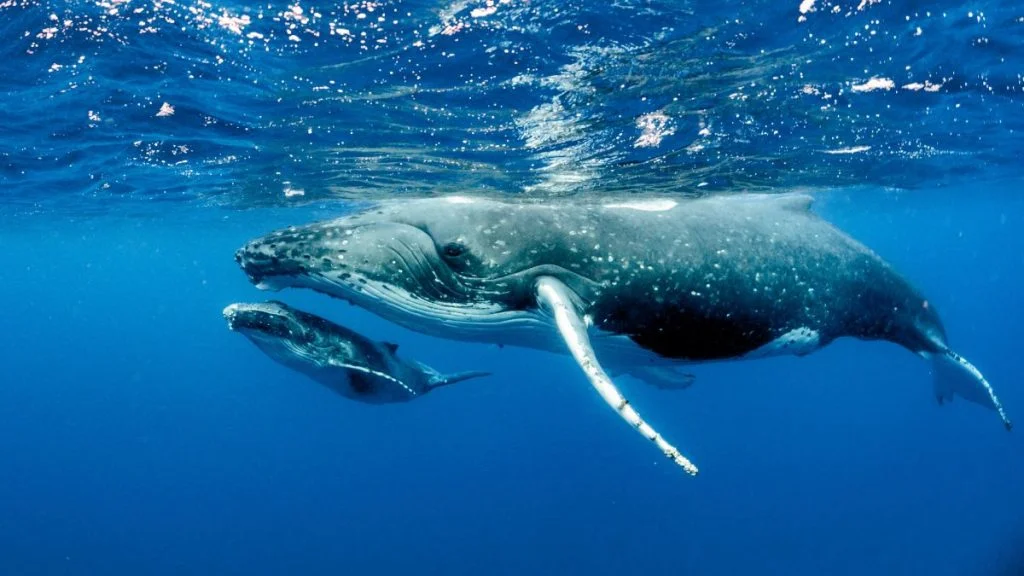Few experiences are as marveling as watching a blue whale (also called a sulfur-bottom whale) leaping out of the water and being washed with the resulting spray.
Whether you encounter it when it’s dead or alive, sighting such a magnificent creature is memorable.
The blue whale ranks as the largest animal in the world,1 and as a result, many theories have been postulated on just how large its organs are.
According to urban legend, the heart of this fascinating animal is as large as a Volkswagen Beetle, and its weight surpasses that of 10 elephants.
While this claim may be exaggerated, one thing is for sure: this cetacean is an exciting subject for animal enthusiasts.
The incredible size of the blue whale sparks some questions about its veins.
If its heart is as large as urban legend suggests, then just how big are the veins?
The veins of a blue whale are 9 inches in diameter—wide enough to contain the head of an adult human or a child’s body. Their veins are the largest you would find out there. The same can be said for their other organs.
The rest of this article will explore many interesting facts about blue whales.
How Big Is the Blue Whale?
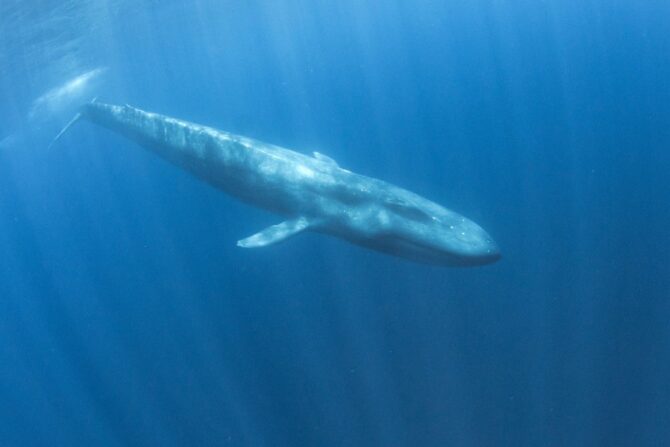
The blue whale is arguably the largest animal in history, with a weight of 150,000 to 180,000 kg and a length of around 108 feet, making them slightly smaller than the United States Space Shuttle and equivalent to the weight of about 40 elephants or around 2,670 average-sized men.2
Adult blue whales typically measure between 79 and 108 feet long and 150 tonnes heavy.
Their size varies depending on gender.
In the Northern hemisphere, the cows (female whales) usually measure 70 feet long and weigh around 112,000 kg, with calves measuring 23 feet long and weighing 2,700 to 3,600 kg.3
Cows are often slightly bigger than their male counterparts (or bulls), which are usually 69 feet long and weigh around 100,000 kg on average.
Antarctic blue whales usually measure longer than other blue whales, with females spanning up to 88.6 feet and males measuring about 82 feet long.
How Long Is a Blue Whale?
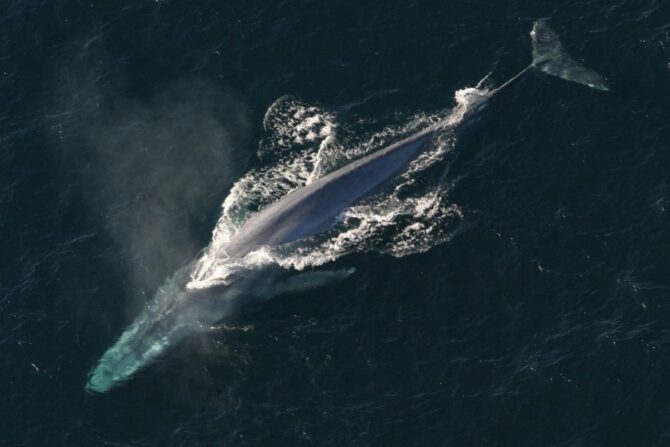
While whales are known for their incredible size, their precise average and maximum length are often subjected to estimation.
However, thanks to organized research and scientific advancement, we need not guess anymore.
Currently, the longest blue whale on record is a female with a length of 110 feet and 2 inches.
The heaviest blue whale was another female hunted in the Southern Ocean, Antarctica, on 20 March 1947.
She weighed a colossal 190,000 kg, equivalent to about 30 elephants or 2,500 people.4
In recent times, however, these magnificent creatures rarely exceed 100 feet.
This is largely due to factors related to the whales’ metabolism and energy levels.
In rare cases where whales are longer than 100 feet, scientific research and hydrodynamic study of the mammal have established that they cannot grow beyond 108 feet.
Geographic location can also influence their size.
This is evident in the size difference between whales living in the Atlantic and Pacific oceans.
In the Central and West North Pacific Ocean, mature female blue whales grow as long as 79 feet, while their counterparts in the Eastern North Pacific were recorded to have a length of 72.1 feet.
In the North Atlantic, they are recorded to be 78 feet long.
As we mentioned earlier, whales in the Antarctic Ocean have a length between 82 feet and 88.6 feet.
The blue whale’s length also differs based on subspecies.
Proof of this is the distinction between the length of the Pygmy blue whale and the Chilean blue whale.
The first has an average length of 69.9 feet, as opposed to the latter’s average length of 77.1 feet.
On average, a blue whale has a length between 70 to 80 feet.
Can a Human Fit Inside a Blue Whale Heart?

As the largest animal on the planet, it is only reasonable that the sulfur-bottom whale has extremely large organs.
One such organ is the heart.
Just as the whale claims the title of the largest animal in the world, its heart also holds the record of the largest heart of any living organism.
The blue whale’s heart weighs an average of 400 lbs and accounts for only 1% of its body weight.
The incredible weight makes a sulfur-bottom whale’s heart 640 times heavier than the human heart and 14 times heavier than the African elephant’s heart (the largest terrestrial creature on the planet).
For better understanding, an apt metaphor to understand the incredible weight of this creature’s heart is the fact that it is almost as large as a Harley-Davidson motorcycle.
Its 400-pound heart produces a heartbeat that is attuned and in sync with the nature of the largest heart on the planet.
The heartbeat of the blue whale is so loud that it can be heard from 2 miles away.
When it dives further into the ocean, its heartbeat slows and reduces to four to eight beats per minute.
In rare instances, the blue whale’s heartbeat can be limited to 2 beats per minute.
When the blue whale surfaces to restore its oxygen levels, its heartbeat ranges from 25 to 37 beats per minute.5
The mammal’s heart measures about 5 feet long, 4 feet wide, and 5 feet tall, amounting to a volume of 100 cubic feet, which is comparable to the anterior of a midsize car.6
Hence, as a human can fit inside such a car, a human can also fit inside a sulfur-bottom whale’s heart.
Can a Human Swim through the Blue Whale’s Veins?
Having a 400-pound heart is indeed incredible.
However, a heart that large needs large arteries and veins to pump blood through the heart and other vital organs.
Due to the size of this animal’s heart, it was believed that the blue whale’s veins were big enough for a human to swim through.
These thoughts have long been held and circulated with little or no proof to disprove or establish them as a fact.
However, that changed in 2014 through the works of Jacqueline Miller.
The mammalian technician for the Royal Ontario Museum in Toronto dissected the heart of a sulfur-bottom whale found in Rocky Harbour, Newfoundland, which was trapped and crushed to death by sea ice.
Miller and her team of scientists dissected the 5-foot-long and 400-pound-heavy heart to reveal the ingenuity of the heart of the world’s largest animal.
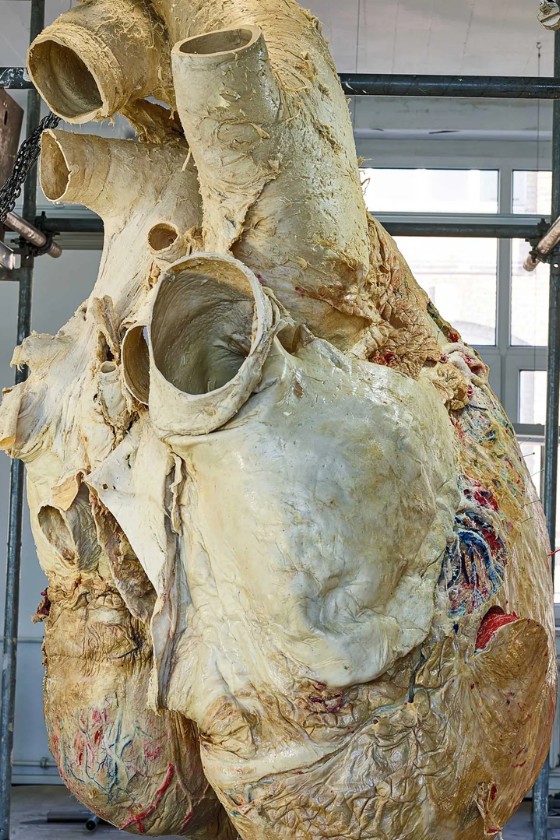
As shown in a video posted on the PBS YouTube channel—part of a three-part series entitled Big Blue Lives aired on PBS in the US and BBC One in the UK—the whale’s aorta is not as big as claimed.
Despite being massive, the aorta of the gigantic mammal is not big enough for a human to swim or for a small car to pass through.
Hence, the widely held belief that humans can swim through a blue whale’s veins is nothing but a myth.
In reality, the sulfur-bottom whale’s vein is about 9 inches wide in diameter, wide enough for a human head to fit.
However, getting other parts of the body would be impossible.
In the US, the average shoulder width of a man is 16 inches, while that of a woman measures 14 inches.
This far exceeds the diameter of the blue whale’s vein, making it impossible for a human to swim through.
However, a child can conveniently swim through the mammal’s veins.
Frequently Asked Questions
How Long Is a Blue Whale’s Blood Vessel?
Unfortunately, the exact length of the blood vessels in a blue whale has not been measured or documented.
However, having a heart comparable to a Harley-Davidson bike, with an aorta wide enough for a child to swim through, would require a lot of blood vessels.
These blood vessels, required in large amounts, are necessary for transporting blood to the various enormous organs in the whale’s body.
With all these in mind, the blood vessels of a blue whale are estimated to extend over a great deal of distance.
How Much Blood Does a Blue Whale Have?
The whale’s 400-pound heart pumps so much blood, which is required for the full functionality of its large organs.
A blue whale’s heart circulates a maximum of about 14,000 pounds of blood, or 6400 kg of blood, equivalent to about 10,000 pints of blood.
How Big Are a Blue Whale’s Eyes?
The blue whale has relatively small eyes for its body size; each eye is about the same size as grapefruit or a softball.
Blue whales are also believed to have weak eyesight.
How Big Is a Blue Whale’s Poop?
This cetacea can egest as much as 200 liters of excrement in a single bowel movement.
This was proven after two separate incidents of whales pooping were captured while they were migrating along the West Australian coastline.7
The figure was estimated, backed by Curt Jenner of the West Australian Centre for Whale Research after reviewing the footage of the mammals excreting.
Final Words
The blue whale, being the largest animal in history, is a creature that inspires wonder in all.
The marvel the sulfur-bottom whale evokes in us has thus led to many theories and outrageous comparisons exaggerating how large their organs are.
Thanks to recent scientific research and advancement, many myths and exaggerations about how grand the blue whale’s organs are now being dispelled.
References & Notes
- What are the biggest animals among us? National Geographic?
- The anatomy of a whale. BBC Earth
- How big is a blue whale? Whale and Dolphin Conservation
- Whale and dolphin record breakers. Whale and Dolphin Conservation
- First-ever recording of a blue whale’s heart rate. Stanford News
- How Big is a Blue Whale’s Heart? National Geographic Education Blog
- Blue whale, world’s largest animal, caught on camera having a poo. ABC News
